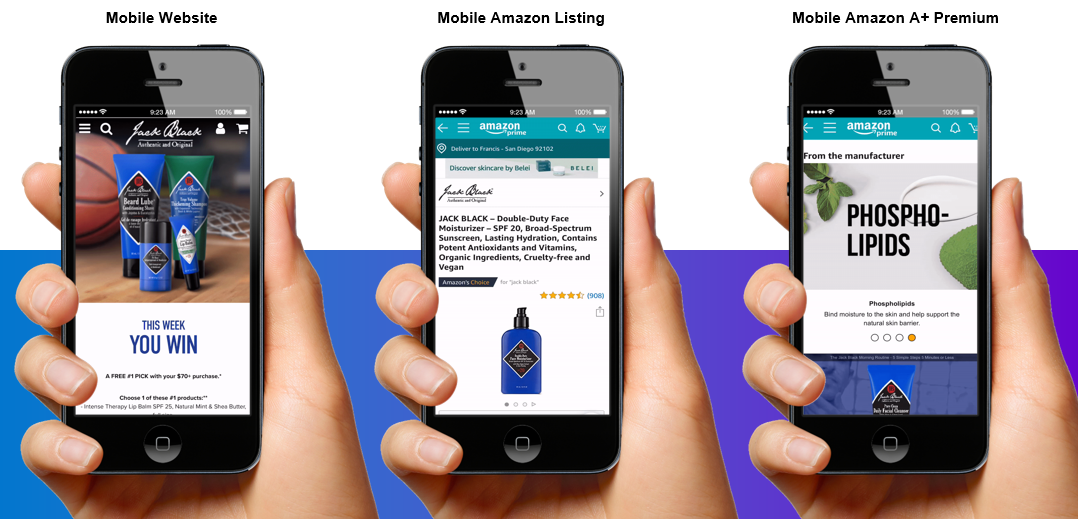Amazon Holiday Sales Strategy For Brands: New Competitive Insights From Our Experts


Summer’s wrapping up and Prime Day has officially come to a close. For Amazon sellers, that means just one thing: it’s time to talk Q4.
It might seem like holiday talk is premature, but really, we’re just a few months away from when the spending spree begins.
In fact, looking at last year’s data, some sellers will need to start ramping up as soon as early October in order to capitalize on their industry’s holiday sales trends.
Do you want to make sure your brand is well-poised for end-of-year success on Amazon? This guide can help.
To start, let’s look at when sales started to pick up on Amazon leading into the holidays. This can give you a good idea of what timeline you should be working on, as well as how to allocate your budget for the remainder of the year.
Broadly, we saw awareness and consideration-stage interest start around Halloween, with more impressions and conversions hitting in early to mid-November.
Conversion rates tend to peak between December 9 and 20, with significant declines after that.
The numbers are slightly different if you look at it by category level, though:
These are only a few of the major holiday categories, though, so be sure to do research on your specific niche before laying out your Q4 strategy. You should also look back at your own historical data from past holiday seasons and note any trends you could capitalize on.
The first step toward building a strong Q4 advertising strategy is to solidify the fundamentals. Make sure you have clean, persuasive creative, that your inventory is stocked, and that your systems and processes are ready for the uptick in sales.
Your product pages should be primed (also known as “Amazon Retail Ready”) and optimized to convert once your ads go live. Otherwise, you’re just wasting spend on sales that will never happen.
Retail readiness is a critical component of successful Amazon marketing.

If you’re hoping to promote your products using Amazon Advertising (or by securing the Buy Box), then having retail-ready product pages is critical. Not only can it help you secure prime ad placement, but it also ensures you make the most of your advertising investment — and isn’t that the whole point?
Checking your Amazon retail readiness is a crucial step in the product marketing process, and it’s especially important if you’re putting a significant chunk of hard-earned dollars toward marketing or advertising those products to potential leads.
“From a partnership perspective, it doesn’t really make sense for a brand to hire an agency to manage their advertising if Amazon does not consider them “retail ready”. You could have a world-class agency build out the most efficient campaigns that drive tons of traffic to your page, but if your reviews are low, product descriptions aren’t built out, or any other “retail ready” factor, you’ll end up driving traffic (and budget) towards a page that isn’t optimized for conversions; essentially wasting your ad budget.”
– Heidi Grütter, Marketing Solutions Manager at Tinuiti

Once you’re sure you’ve got a solid foundation in place, there are a few techniques you can try to maximize your ad returns:
Time and time again, we’ve found that Sponsored Brand ads are much more effective at converting leads in this part of Q4, so shift a good part of your budget toward these options if possible. You should also use the “Optimize My Ads” function so your ads dynamically change based on the user’s search intent.

If you advertise through Amazon Sponsored Brands, this new product optimization feature lets you engage shoppers with more dynamic Sponsored Brands ads. Your Sponsored Brands ads will automatically display the most relevant ASINs from your store or landing page based on a shopper’s search. All of these new features are currently available in the Campaign Manager, Campaign Builder, and Amazon Advertising API.
Again, use the dynamic ad feature to really make sure your ads resonate for the shopper.
These can be great resources for toys, games and electronics, but they also work well with any potential gift item you might be selling ahead of the holidays. You can also use these pools to cross-sell similar or complementary products if you have them.
This is especially important if your products require educating the consumer before they can convert.
“It’s also worth mentioning the shortened Q4 Holiday shopping season. In 2018, Black Friday fell on November 23rd and in 2019, Black Friday falls on November 29th, which subsequently means the holiday shopping season will be a full 7 days shorter this year. Previously we had 8 full days of shopping in November while this year we’ll have 1 day. What this means for advertisers across Search & Amazon DSP is that there is a much shorter window of opportunity to capture consumer demand within.”
– Zak Semitka, Marketplace Channel Analyst at Tinuiti

These should include both branded and non-branded terms.
Pro-tip: When you’re paying for each click on an ad, you need to strike a delicate balance between appearing in too many or too few searches. If you appear in searches that aren’t relevant to your product, you might have people clicking through who are less likely to buy your product. But if you over-target and only use exact match keywords, you could be missing out on related searches and interested shoppers. The three new updates to Sponsored Brands keyword targeting help you reach more customers, target your ads more specifically, and control ad spend more carefully.
At a high level, starting early is also critical to holiday success. Set your budgets at least a few months ahead of time and get your creative approved (and aligned to the right buyer segments) well before Q4 kicks off.
And once all is said and done? Go back through your Q4 results and make note of any lessons or, at the very least, hypotheses you can test come 2020. The more you learn from this year, the better poised you’ll be for next year and beyond.
Here’s a checklist to keep on hand as you finalize preparations for Q4 2019:
Want to learn more about strategizing for Q4? Email [email protected].
